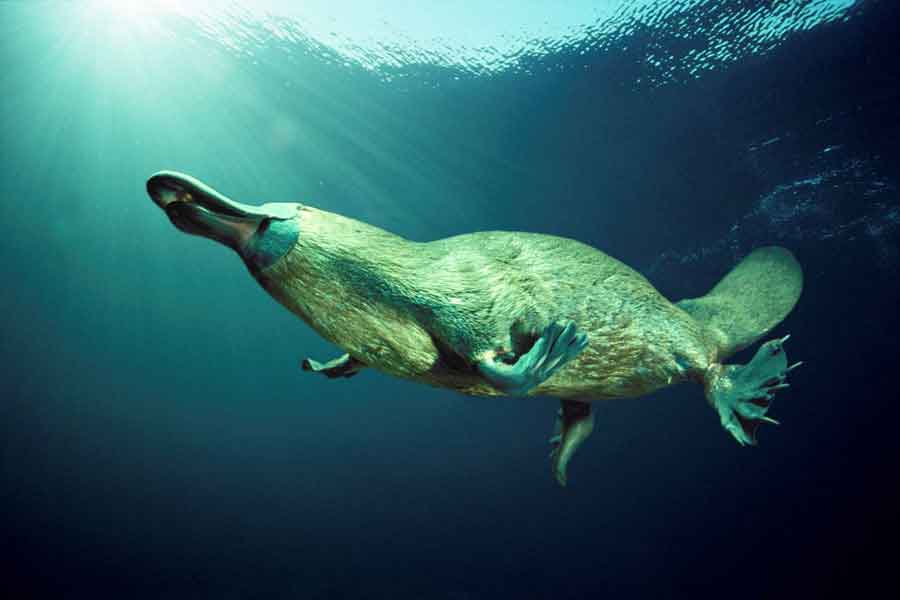
When Dr. Shaw of the Natural History Museum in London received the skin of a platypus in 1797, he thought it was a hoax. It was impossible to imagine the existence of an animal with the fur of a mole, tail of a beaver, legs of a frog, spur of a rooster, bill of a duck, and teeth. What they didn’t yet know was that it was also a mammal that lays eggs.
Residing in the lakes and rivers of Tasmania and Australia, the platypus seems like a creature assembled by nature with whatever was left. However, upon closer study, it is a remarkable being. It is a burrowing animal that constructs a burrow on the riverbanks consisting of a long gallery that opens both above and below the water level, leading to a fairly spacious chamber lined with dry grass. It is in this chamber that the female lays her two eggs, which are soft and pliable. The hatchlings immediately crawl into a fold of skin, a rudimentary form of a marsupial pouch where lactating secretions are poured. To add to the confusion, platypuses have «milk» teeth that they lose with age.
Their duck-like bill, covered with a thin skin, is an incredibly useful tool for foraging in the muddy riverbeds where platypuses feed on worms, insect larvae, freshwater shrimps, immature snails, and small fish and frogs. Once submerged in the water, their eyes, ears, and nostrils close, allowing them to swim without seeing. This is where the most fantastic aspect of this animal comes into play.
The bill of platypuses possesses electroreceptors so sensitive that they can detect the electric field generated by the slight movement of a shrimp’s tail twenty centimeters away. Undoubtedly, they are extremely efficient hunters who continue to astonish us even today.
«You cannot defend what you do not love, and you cannot love what you do not know.»

